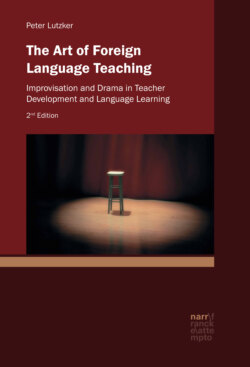Читать книгу The Art of Foreign Language Teaching - Peter Lutzker - Страница 16
На сайте Литреса книга снята с продажи.
1.2.5 Schiller: Aesthetic Education
ОглавлениеSchillers small tract Über die ästhetische Erziehung des Menschen, written in the form of twenty-seven letters, conveys his ideal of the development of an individual and a society in freedom. In contrast to Kant who saw the overcoming of feelings and instincts through a sense of moral duty and ensuing actions as the highest virtue, Schiller sought possibilities in which an individual in full acceptance of his or her sentient being would desire to cultivate the highest moral ideals as an act of free choice. He describes two contrasting instincts as generally being decisive in human behaviour: an instinct in which one is led to unreflectively follow and act on sentient experience (Stofftrieb), and an instinct through which these feelings can be subjugated in order to act according to moral principles (Formtrieb). Through the Stofftrieb, actions are dictated by sensory experience and natural instincts; through the Formtrieb one controls feelings and instincts through inner thought and logic. In this polarity, Schiller saw little possibility of realizing the potentials of human development, insofar as in both cases necessity rather than freedom is decisive in shaping behaviour. To these two instincts, he envisioned a third, the Spieltrieb, in which these two instincts are united, creating the possibility of human behaviour resulting from freedom and choice, instead of instinct, or moral imperatives:
The sense impulse wants to be determined, to receive its object; the form impulse wants to determine for itself, to produce its object; the play impulse will endeavour to receive as it would itself have produced, and to produce as the sense aspires to receive.49 (14th letter)
[Der sinnliche Trieb will bestimmt werden, er will sein Objekt empfangen; der Formtrieb will selbst bestimmen, er will sein Objekt hervorbringen; der Spieltrieb wird also bestrebt sein so zu empfangen, wie er selbst hervorgebracht hätte, und so hervorzubringen, wie der Sinn zu empfangen trachtet.] (italics in original)
The realization of the Spieltrieb is only possible in the realm of beauty (Bereich des Schönen). It is only in and through aesthetic experience that the Spieltrieb can be fully experienced and it is only in play (Spiel) that human potentials are fully realized:
… the Beautiful is not to be mere life, nor mere shape, but living shape – that is, beauty – as it dictates to mankind the twofold law of absolute formality and absolute reality. Consequently it also pronounces the saying: Man shall only play with Beauty, and he shall play only with Beauty. Thus – and to finally speak it out – the human being only plays when he is in the full sense of the word human and he is only wholly human when he plays.50 (15th letter) ( italics in original)
[…das Schöne soll nicht bloßes Leben und nicht bloße Gestalt, sondern lebende Gestalt, das ist, Schönheit sein; indem sie ja dem Menschen das doppelte Gesetz der absoluten Formalität und der absoluten Realität diktiert. Mithin tut sie auch den Ausspruch: der Mensch soll mit der Schönheit nur spielen, und er soll nur mit der Schönheit spielen. Denn, um es endlich auf einmal herauszusagen, der Mensch spielt nur, wo er in voller Bedeutung des Worts Mensch ist, und er ist nur da ganz Mensch, wo er spielt.] (italics in original)
Schiller’s view of aesthetic education can only be fully understood in the context of the central role which he considered aesthetics to have in all human development. In his work it becomes evident that the role of art and beauty (Schönheit) in the further development of the Spieltrieb are seen as being decisive in all areas of education and life, resulting ideally in a harmony and unity – a Lebenskunst with implications in all areas of social life:
Through Beauty the sensuous man is led to form and to thought; through Beauty the spiritual man is brought back to matter and restored to the world of sense.51 (18th letter)
[Durch die Schönheit wird der sinnliche Mensch zur Form und zum Denken geleitet; durch die Schönheit wird der geistige Mensch zur Materie zurückgeführt und der Sinnenwelt wiedergegeben.]
In this educational/aesthetic context, individual freedom coupled with an inner sense of responsibility only becomes possible through cultivating and developing one’s senses, sentient life and artistic imagination through aesthetic experience.
There is no other way to make the sensuous man sensible other than to first make him aesthetic.52 (23rd letter)
[Es gibt keinen anderen Weg, den sinnlichen Menschen vernünftig zu machen, als daß man denselben zuvor ästhetisch macht]
Schiller’s concept of aesthetic education in which artistic processes and activity are viewed as decisive elements in all human development evidences clear parallels to the thinking of other philosophers of that period, most notably Herder and Schleiermacher. At the same time, his Ästhetische Briefe can be seen as representing a significant step in the development of this connection between art and education, which was later to have a direct and formative influence on the thinking of later educational reformers.
